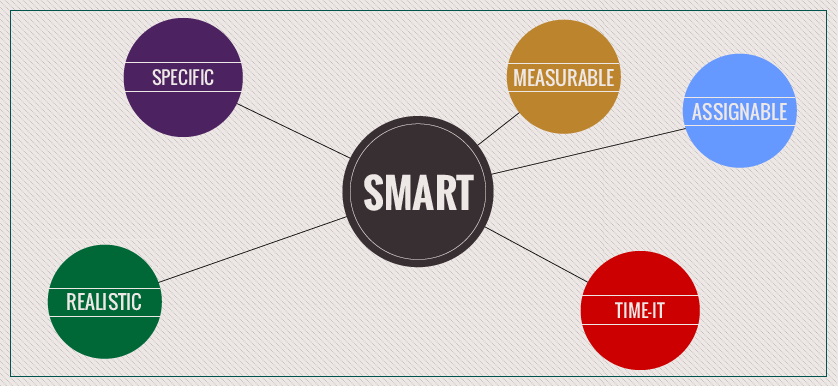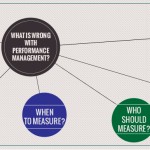Be smart about SMART goals, SMART objectives, SMART KPIs and smartKPIs
smartKPIs.com Performance Architect update 2/2010
Oftentimes we take things for granted, without asking questions such as:
- Where did this idea came from?
- When did it originally emerge?
- What were the conditions that lead to it?
- Who contributed to its development?
- How should it be used properly?
- Why is it relevant today?
Terms such as SMART goals, SMART objectives and SMART KPIs are today part of the vocabulary in most offices from around the world. smartKPIs is a new term introduced through this website that can be useful in clarifying these concepts. Today’s post will partly address the above questions in terms of the use of the SMART acronym. It will hopefully raise further questions about the slow process of maturing of Performance Management as a discipline.
Theory baseThe SMART acronym is one of the most used in business. It has its origins in the Goal Setting Theory school of thought (Locke and Latham, 2002, Locke, 2004). One of the early articles that outlined the benefits of identifying clear goals was published by Edwin Locke, considered along with Gary Latham, one of the fathers of the theory. The article cited studies demonstrating that:
- “hard goals produce a higher level of performance (output) than easy goals;
- specific hard goals produce a higher level of output than a goal of “do your best”;
- behavioral intentions regulate choice behavior.”
(Locke, E. A. ,1968)
Original version of the S.M.A.R.T. acronymThe popularization of the S.M.A.R.T. acronym itself started with an article published in 1981 by George T. Doran, a consultant and former Director of Corporate Planning for Washington Water Power Company, Spokane. In this article, with the title “There’s a S.M.A.R.T. way to write management’s goals and objectives”, he proposed the following criteria a S.M.A.R.T. objective should meet:
- Specific – target a specific area for improvement
- Measurable – quantify or at least suggest an indicator of progress
- Assignable – specify who will do it
- Realistic – state what results can realistically be achieved, given available resources
- Time-related – specify when the result(s) can be achieved.
(Doran, 1981)
In addition, Doran made two important notes. First not all objectives must be measured across all levels of management, as in some instances the focus should rather be on the action plan for achieving the objective. Secondly, not every objective written will meet all five criteria. They should be rather seen as guidelines. (Doran, 1981)
SMART goals or SMART objectivesAlmost 30 years on, the SMART acronym is widely popular and used. Google searches using the most common keyword combinations returned on 15 January 2010 about:
- 138,000 results for “SMART goals”
- 46,100 results for “SMART objectives”
- 3,970 results for “SMART KPIs”
However, in terms of the initial intent of using the acronym, Doran (1981) inclined towards using the SMART criteria mainly for defining objectives. He acknowledges the following distinction between goals and objectives:
- Goals represent unique beliefs and philosophies, are usually continuous and long term.
- Objectives are seen as providing quantitative support and expression to management’s beliefs.
Considering this proposed distinction, the SMART criteria should only be applied to objectives. In practice, however the two terms are used interchangeably by organizations. Doran’s advice regarding this terminology issue is as relevant today as it was 30 years ago:
“Although it may be fashionable to debate the differences between goals and objectives in our graduate business schools, from a practical point of view the label doesn’t make any difference provided officers / managers agree on the meaning of these words. In some cases, goals are short-term and objectives are long-term. In others, the opposite is true. To other organizations, goals and objectives are synonymous. Time should not be wasted in debate over these terms. The important consideration is not to have the label get in the way of effective communication.” (Doran, 1981).
On SMART Key Performance Indicators (KPIs)While there are many examples of objectives that are incompletely defined and don’t meet the SMART criteria, in the case of KPIs things are different. By its own nature and definition, a KPI is an indicator of performance with the following inherent characteristics:
- Specific – it has to be specific to an area as it is linked to a process, functional area or preferably an objective, making it a SMART Objective
- Measurable – it has to be measurable, otherwise it won’t indicate anything
- Assignable – unless is assigned, it will not me measured
- Realistic – setting targets is inherent in the documentation and use of KPIs.
- Time-it is implied in the measurement process
So a KPI shouldn’t even be called KPI if the smart criteria are not met. For this reason, the term SMART KPI is in a way doubling up on the SMART criteria.
smartKPIssmartKPIs is a term introduced by www.smartKPIs.com to describe the most relevant KPIs in use by organizations, KPIs that are truly “Key” for improving business performance. The term “KPI” has been used with largesse over time and it almost replaced the term “performance measure”. Every KPI is a performance measure, but not all performance measures are KPIs. There are hundreds of measures monitored by organizations, but only a few can be considered “Key”.
Out of these few, there is an even smaller number that is widely used across businesses, for good reasons. They are the “usual suspects” such as:
- % Customer satisfaction
- % Employee engagement
- $ Total revenue
- $ Net profit
- % Projects delivered on time, on budget and according to scope
The criteria for smartKPIs are:
- Being recommended for their usefulness in academic and practitioner publications
- Frequency of use across Functional areas and Industries
- Fulfillment of the criteria of how good KPIs should be defined and used.
Considering the “inflation” of KPIs in today’s business environment, identifying these smartKPIs will simplify the selection of relevant KPIs. It will also improve communication by enriching and clarifying a rather confusing glossary of terms that Performance Management as a discipline inherited over time.
Stay smart! Enjoy smartKPIs.com!
Aurel Brudan Performance Architect, www.smartKPIs.com
References
- Doran, G. T. (1981) “There’s a S.M.A.R.T. way to write management’s goals and objectives”, Management Review, Vol. 70, Issue 11, p35-36, 2p.
- Locke, E. A. (1968) Toward a Theory of Task Motivation and Incentives., Organizational Behavior & Human Performance, Vol. 3, Issue 2, p157-189, 33p
- Locke, E. A. (2004). “Goal setting theory and its applications to the world of business”, Academy of Management Executive, Vol. 18, No. 4.
- Locke, E. A. & Latham G. P., (2002). “Building a Practically Useful Theory of Goal Setting and Task Motivation”, American Psychologist, Vol. 57, No. 9, 705–717.

Tags: Performance Architect Update, SMART, SMART Goals, SMART KPI, SMART Objectives, Theory






